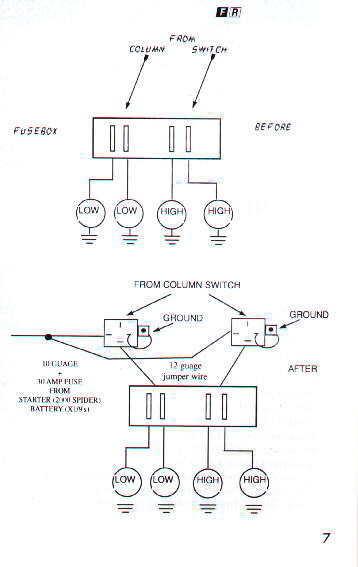 FAQ Project. |
RESTORATION James Seabolt updated 05/30/05 |
 FAQ Project. |
RESTORATION James Seabolt updated 05/30/05 |
 This next step involves installing headlight relays. There are three reasons I like
installing headlight relays. One is because there are so many connectors that current
must pass through , it would be extremely time consuming to replace everyone of them.
Second is to save wear on your headlight and column switches. And third is because I
think H4 headlights require more than 12 volts in order for them to perform at their
best. If I remember correctly after replacing the 3 prong connectors, the grounds,
the connectors at the fusebox, power went from 8 volts to around 12.3 volts
and the H4 headlights were still dim. When purchasing headlight relays, stick with a
good brand like Hella or Bosch. Don't waste your money on those cheap $3.00 relays. They
are junk and I can speak from experience.
This next step involves installing headlight relays. There are three reasons I like
installing headlight relays. One is because there are so many connectors that current
must pass through , it would be extremely time consuming to replace everyone of them.
Second is to save wear on your headlight and column switches. And third is because I
think H4 headlights require more than 12 volts in order for them to perform at their
best. If I remember correctly after replacing the 3 prong connectors, the grounds,
the connectors at the fusebox, power went from 8 volts to around 12.3 volts
and the H4 headlights were still dim. When purchasing headlight relays, stick with a
good brand like Hella or Bosch. Don't waste your money on those cheap $3.00 relays. They
are junk and I can speak from experience.